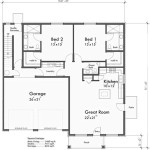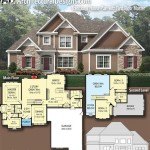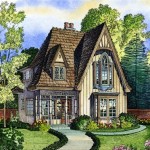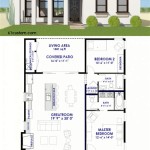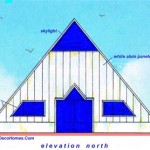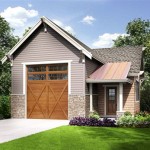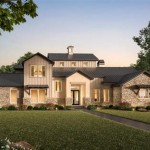Hawaiian house plans are architectural blueprints designed specifically to meet the unique needs and preferences of Hawaii’s climate, culture, and lifestyle. These plans incorporate elements that cater to the island’s tropical environment, such as open floor plans, expansive lanais, and sustainable building materials. An example of a typical Hawaiian house plan might include a single-story home with a large, wraparound lanai, allowing for seamless indoor-outdoor living and maximizing the enjoyment of Hawaii’s year-round pleasant weather.
Creating a Hawaiian house plan involves careful consideration of various factors, including site orientation to optimize natural light and ventilation, the incorporation of traditional Hawaiian design elements, and the use of sustainable and eco-friendly materials. These plans aim to create comfortable, functional, and aesthetically pleasing living spaces that reflect Hawaii’s unique architectural heritage.
In the following sections, we will delve deeper into the key elements of Hawaiian house plans, providing insights into their design principles, common features, and the factors that influence their development.
Hawaiian house plans encompass a unique blend of architectural elements and design principles that cater to the specific needs of Hawaii’s climate and lifestyle. Here are 10 important points to consider when designing or selecting a Hawaiian house plan:
- Open floor plans
- Expansive lanais
- Sustainable materials
- Site orientation
- Hawaiian design elements
- Indoor-outdoor living
- Natural light and ventilation
- Energy efficiency
- Cultural influences
- Tropical landscaping
By incorporating these elements into your Hawaiian house plan, you can create a comfortable, functional, and aesthetically pleasing living space that reflects the unique spirit and beauty of Hawaii.
Open floor plans
Open floor plans are a defining characteristic of Hawaiian house plans. They create a spacious and airy living environment, allowing for seamless flow between indoor and outdoor spaces. Open floor plans maximize natural light and ventilation, reducing the need for artificial lighting and cooling systems. This design approach is particularly well-suited to Hawaii’s warm climate, where indoor and outdoor living are seamlessly integrated.
In a typical Hawaiian house plan with an open floor plan, the living room, dining room, and kitchen are combined into one large, open space. This creates a sense of spaciousness and togetherness, making it ideal for families and entertaining guests. Open floor plans also promote natural airflow, as there are no walls or partitions to obstruct the movement of air. This helps keep the home cool and comfortable, even during the hottest months of the year.
Another advantage of open floor plans is their flexibility. They can be easily adapted to changing needs and preferences. For example, if you need more space for a growing family, you can add a room or partition off a section of the open space. Conversely, if you want to create a more open and airy feel, you can remove walls or partitions to create a larger, unified space.
Overall, open floor plans are a key element of Hawaiian house plans, offering a range of benefits including spaciousness, natural light and ventilation, and flexibility. They create a comfortable and inviting living environment that is well-suited to Hawaii’s unique climate and lifestyle.
Expansive lanais
Expansive lanais are another defining characteristic of Hawaiian house plans. Lanais are outdoor living spaces that are typically covered by a roof and surrounded by screens or windows. They provide a seamless transition between indoor and outdoor living, allowing you to enjoy the beautiful Hawaiian weather and scenery from the comfort of your home.
- Outdoor living space: Lanais extend the living space of your home outdoors, providing an additional area to relax, entertain guests, or simply enjoy the outdoors. They are perfect for al fresco dining, lounging, or simply enjoying the views.
- Natural light and ventilation: Lanais allow for plenty of natural light and ventilation to enter the home, reducing the need for artificial lighting and cooling systems. This helps create a more comfortable and energy-efficient living environment.
- Indoor-outdoor connection: Lanais create a strong connection between the indoor and outdoor spaces of your home. They allow you to easily transition between the two, making it easy to enjoy the outdoors without having to leave the comfort of your home.
- Increased property value: Expansive lanais can add significant value to your property. They are a highly desirable feature for many homebuyers, as they offer a unique and desirable outdoor living experience.
Overall, expansive lanais are a key element of Hawaiian house plans, offering a range of benefits including additional living space, natural light and ventilation, a strong indoor-outdoor connection, and increased property value. They create a comfortable and inviting living environment that is well-suited to Hawaii’s unique climate and lifestyle.
Sustainable materials
Sustainability is an important consideration in Hawaiian house plans, as the islands are particularly vulnerable to the effects of climate change. Sustainable materials can help to reduce the environmental impact of your home, while also creating a healthier and more comfortable living environment.
Some of the most common sustainable materials used in Hawaiian house plans include:
- Bamboo: Bamboo is a rapidly renewable resource that is strong, durable, and resistant to pests. It can be used for a variety of purposes, including flooring, walls, and ceilings.
- Recycled materials: Recycled materials, such as reclaimed wood and metal, can help to reduce waste and conserve natural resources. They can be used for a variety of purposes, including flooring, countertops, and siding.
- Low-VOC materials: Low-VOC (volatile organic compound) materials emit fewer harmful chemicals into the air, creating a healthier indoor environment. They can be used for a variety of purposes, including paint, flooring, and adhesives.
- Energy-efficient materials: Energy-efficient materials, such as solar panels and double-paned windows, can help to reduce your energy consumption and save money on your utility bills. They can also help to make your home more comfortable and reduce your carbon footprint.
By using sustainable materials in your Hawaiian house plan, you can help to create a more sustainable and healthier living environment for yourself and your family.
In addition to the environmental benefits, sustainable materials can also offer a number of financial benefits. For example, using energy-efficient materials can help to reduce your energy consumption and save money on your utility bills. Recycled materials can also be more affordable than new materials, helping you to save money on the construction of your home.
Overall, using sustainable materials in your Hawaiian house plan is a smart choice for both the environment and your wallet. By choosing sustainable materials, you can create a more sustainable and healthier living environment for yourself and your family, while also saving money on the construction and maintenance of your home.
Site orientation
Site orientation is an important consideration in Hawaiian house plans, as it can have a significant impact on the comfort, energy efficiency, and overall livability of your home.
- Maximize natural light and ventilation: By orienting your home to take advantage of the prevailing trade winds, you can maximize natural light and ventilation. This will help to keep your home cool and comfortable, even during the hottest months of the year. It will also reduce your need for artificial lighting and cooling systems, saving you money on your energy bills.
- Minimize solar heat gain: By orienting your home to minimize solar heat gain, you can reduce the amount of heat that your home absorbs from the sun. This will help to keep your home cooler and more comfortable, reducing your need for air conditioning. There are a number of ways to minimize solar heat gain, including using overhangs, awnings, and landscaping.
- Protect from strong winds: By orienting your home to protect from strong winds, you can reduce the risk of damage to your home and property. This is especially important in areas that are prone to hurricanes and other high-wind events. There are a number of ways to protect your home from strong winds, including using windbreaks, hurricane shutters, and reinforced construction.
- Maximize views: By orienting your home to maximize views, you can take advantage of the beautiful scenery that Hawaii has to offer. This can make your home more enjoyable to live in and can also increase its value.
By carefully considering site orientation, you can create a Hawaiian house plan that is comfortable, energy efficient, and livable. You can also take advantage of the beautiful scenery that Hawaii has to offer.
Hawaiian design elements
Hawaiian design elements are an important part of Hawaiian house plans, as they help to create a sense of place and reflect the unique culture and heritage of Hawaii. There are a number of different Hawaiian design elements that can be incorporated into a house plan, including:
- Open floor plans: Open floor plans are a common feature of Hawaiian homes, as they allow for a seamless flow between indoor and outdoor spaces. This is well-suited to Hawaii’s warm climate and laid-back lifestyle, as it allows for easy entertaining and indoor-outdoor living.
- Natural materials: Natural materials, such as wood, stone, and bamboo, are often used in Hawaiian house plans. These materials help to create a warm and inviting atmosphere, and they can also help to connect the home to its surroundings.
- Traditional Hawaiian motifs: Traditional Hawaiian motifs, such as tapa patterns and petroglyphs, can be incorporated into Hawaiian house plans in a variety of ways. These motifs can be used to decorate walls, floors, and ceilings, and they can also be used to create custom furniture and artwork.
- Tropical landscaping: Tropical landscaping is an important part of Hawaiian house plans, as it helps to create a sense of place and connect the home to its surroundings. Common tropical plants used in Hawaiian landscaping include hibiscus, plumeria, and coconut palms.
By incorporating Hawaiian design elements into your house plan, you can create a unique and beautiful home that reflects the spirit of Hawaii. Hawaiian design elements can help to create a sense of place, connect the home to its surroundings, and create a warm and inviting atmosphere.
Indoor-outdoor living
Indoor-outdoor living is a defining characteristic of Hawaiian house plans. This design approach seamlessly integrates indoor and outdoor spaces, creating a home that is both comfortable and connected to its surroundings.
- Expansive lanais: Lanais are outdoor living spaces that are typically covered by a roof and surrounded by screens or windows. They extend the living space of the home outdoors, providing an additional area to relax, entertain guests, or simply enjoy the outdoors. Lanais are a great place to enjoy Hawaii’s beautiful weather and scenery, and they can also be used to create a more open and airy feel in the home.
- Open floor plans: Open floor plans are another common feature of Hawaiian house plans. They create a spacious and airy living environment, allowing for seamless flow between indoor and outdoor spaces. Open floor plans maximize natural light and ventilation, reducing the need for artificial lighting and cooling systems. They also promote a sense of togetherness and make it easy to entertain guests.
- Large windows and doors: Large windows and doors help to blur the lines between indoor and outdoor spaces. They allow for plenty of natural light to enter the home, and they also make it easy to transition between the two spaces. Large windows and doors can also be used to create a more open and airy feel in the home.
- Outdoor kitchens and dining areas: Outdoor kitchens and dining areas are a great way to enjoy Hawaii’s beautiful weather and scenery. They allow you to cook and dine outdoors, creating a more relaxed and enjoyable dining experience. Outdoor kitchens and dining areas can also be used to entertain guests, and they can add value to your home.
Overall, indoor-outdoor living is a key element of Hawaiian house plans. It creates a home that is both comfortable and connected to its surroundings. By incorporating indoor-outdoor living features into your house plan, you can create a more enjoyable and livable space.
Natural light and ventilation
Natural light and ventilation are important considerations in Hawaiian house plans. Hawaii’s tropical climate and abundant sunshine make it possible to design homes that are naturally lit and ventilated, reducing the need for artificial lighting and cooling systems.
- Large windows and doors: Large windows and doors allow for plenty of natural light to enter the home, reducing the need for artificial lighting. They also promote natural ventilation, as they allow air to flow through the home more easily.
- High ceilings: High ceilings create a more spacious and airy feel in the home, and they also help to improve natural ventilation. Warm air rises, so high ceilings allow the warm air to escape from the home more easily, creating a more comfortable living environment.
- Cross-ventilation: Cross-ventilation is the movement of air through a space from one side to another. It can be achieved by placing windows and doors on opposite sides of the home. Cross-ventilation helps to cool the home and reduce the need for air conditioning.
- Ceiling fans: Ceiling fans can help to circulate the air in the home and create a more comfortable living environment. They can be used in conjunction with natural ventilation to improve airflow and reduce the need for air conditioning.
By incorporating natural light and ventilation into your Hawaiian house plan, you can create a more comfortable and energy-efficient home. You can also reduce your reliance on artificial lighting and cooling systems, saving you money on your energy bills.
Energy efficiency
Energy efficiency is an important consideration in Hawaiian house plans, as it can help to reduce your energy consumption and save money on your utility bills. There are a number of different energy-efficient features that can be incorporated into a Hawaiian house plan, including:
- Energy-efficient appliances: Energy-efficient appliances use less energy to operate, which can help to reduce your energy consumption and save money on your utility bills. Look for appliances with the ENERGY STAR label, which indicates that they meet certain energy-efficiency standards.
- LED lighting: LED lighting is much more energy-efficient than traditional incandescent lighting, and it can last up to 25 times longer. Switching to LED lighting can help to reduce your energy consumption and save money on your utility bills.
- Solar panels: Solar panels can generate electricity from the sun, which can help to reduce your reliance on the grid and save money on your utility bills. Solar panels can be installed on the roof of your home, or they can be ground-mounted.
- Tankless water heater: Tankless water heaters heat water on demand, which means that they only use energy when you need hot water. This can help to reduce your energy consumption and save money on your utility bills.
By incorporating energy-efficient features into your Hawaiian house plan, you can create a more sustainable and affordable home. You can also reduce your reliance on the grid and save money on your utility bills.
Cultural influences
Hawaiian house plans are influenced by a variety of cultural factors, including the Polynesian heritage of the Hawaiian people, the influence of American missionaries in the 19th century, and the influx of Asian immigrants in the late 19th and early 20th centuries.
- Polynesian influences: Traditional Hawaiian homes were typically small, one-room structures with a thatched roof and a dirt floor. They were designed to be open and airy, and they often featured a lanai, or outdoor living space. Polynesian influences can still be seen in many Hawaiian house plans today, such as the use of open floor plans, lanais, and natural materials.
- Missionary influences: American missionaries arrived in Hawaii in the early 19th century, and they brought with them their own architectural styles. Missionaries built churches, schools, and homes in a style that was influenced by New England architecture. This style is characterized by its simple lines, symmetrical facades, and use of wood siding. Many Hawaiian house plans today incorporate elements of missionary architecture, such as the use of wood siding, symmetrical facades, and large windows.
- Asian influences: Asian immigrants began arriving in Hawaii in the late 19th century, and they brought with them their own architectural styles. Chinese immigrants built temples and homes in a style that was influenced by Chinese architecture. Japanese immigrants built homes in a style that was influenced by Japanese architecture. These styles are characterized by their use of bright colors, intricate details, and curved roofs. Many Hawaiian house plans today incorporate elements of Asian architecture, such as the use of bright colors, intricate details, and curved roofs.
- Contemporary influences: In recent years, Hawaiian house plans have been influenced by contemporary architectural styles. Contemporary styles are characterized by their use of clean lines, open floor plans, and large windows. Many Hawaiian house plans today incorporate elements of contemporary architecture, such as the use of clean lines, open floor plans, and large windows.
The cultural influences that have shaped Hawaiian house plans are evident in the variety of architectural styles that can be found in Hawaii today. From traditional Hawaiian homes to missionary-style homes to Asian-influenced homes to contemporary homes, there is a wide range of architectural styles to choose from. This diversity reflects the rich cultural heritage of Hawaii and the many different influences that have shaped its architecture.
Tropical landscaping
Tropical landscaping is an important part of Hawaiian house plans, as it helps to create a sense of place and connect the home to its surroundings. Common tropical plants used in Hawaiian landscaping include hibiscus, plumeria, and coconut palms.
- Create a sense of place: Tropical landscaping can help to create a sense of place by using plants that are native to Hawaii or that are commonly associated with Hawaii. This can help to make the home feel more connected to its surroundings and give it a more unique and authentic Hawaiian character.
- Connect the home to its surroundings: Tropical landscaping can help to connect the home to its surroundings by using plants that are compatible with the local climate and soil conditions. This can help to create a more harmonious and sustainable landscape that is in balance with the natural environment.
- Provide privacy and shade: Tropical plants can be used to provide privacy and shade around the home. This can be especially important in areas where there is a lot of sun or where there are close neighbors. Tropical plants can also be used to create windbreaks, which can help to protect the home from strong winds.
- Add color and interest: Tropical plants come in a wide variety of colors and shapes, which can add visual interest and beauty to the landscape. Tropical plants can also be used to create focal points or to highlight certain areas of the landscape.
Overall, tropical landscaping is an important part of Hawaiian house plans. It can help to create a sense of place, connect the home to its surroundings, provide privacy and shade, and add color and interest to the landscape.





+copy(2).jpg)




Related Posts

